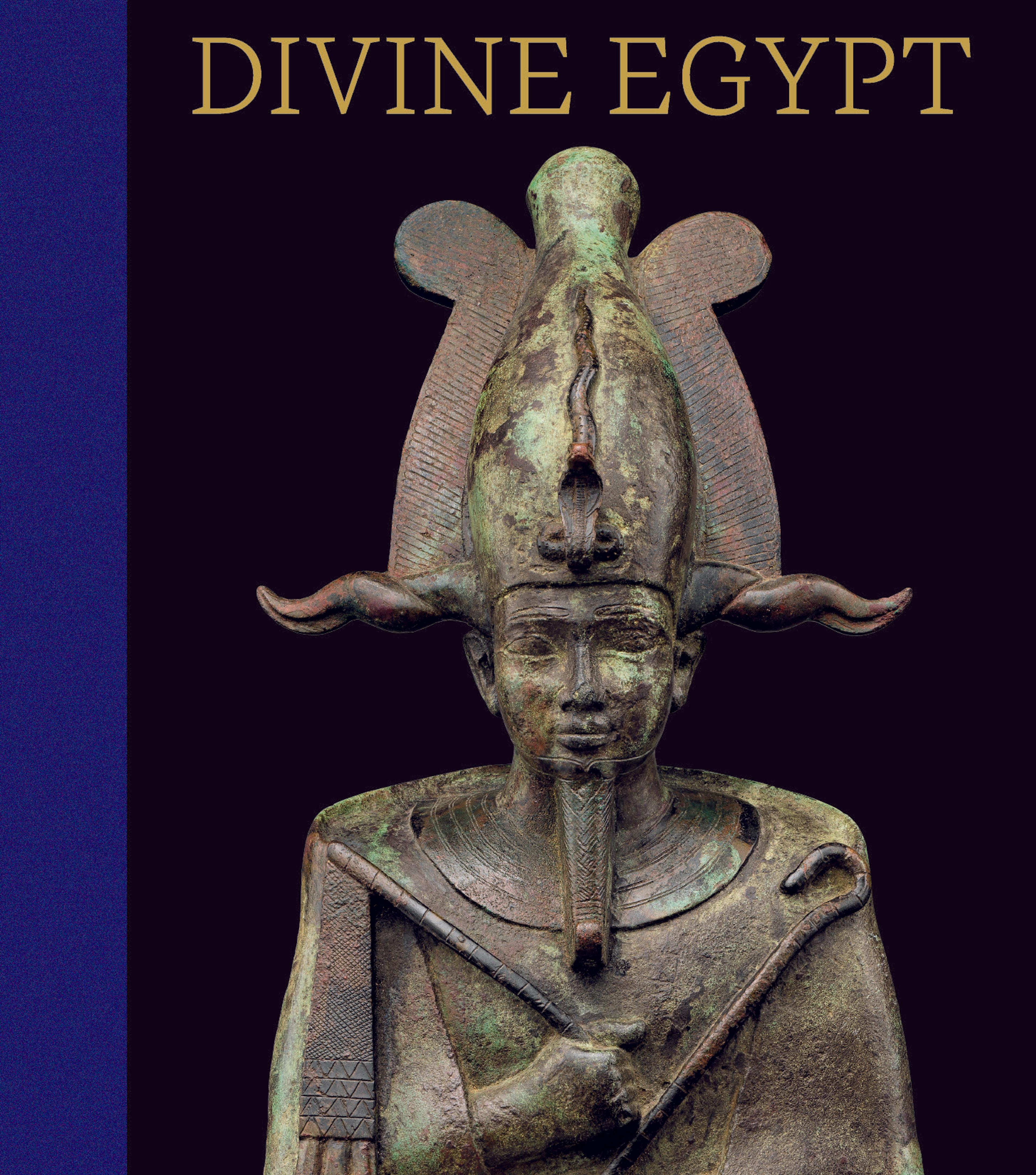Coffin of Wedjarenes
The Mistresss of the House Wedjarenes was a daughter of Pakhtiu, a Priest of Montu-Lord-of-Thebes and Scribe of the Two Treasuries of the House of Amun, and the Mistress of the House Nesikhonsu. Her coffin is an exquisite example of its type. It shows Wedjarenes in the form of a sah, a properly embalmed individual able to function as an effective being in the afterlife. She wears a winged headdress over her braided wig, which in turn falls over a broad festival collar.
A figure of the sky goddess Nut stretches her wings over Wedjarenes's chest, protecting the mummy beneath. Two additional figures of Nut adorn the interior of the coffin: Inside the base, the goddess is shown in profile, wearing a sheath dress, jewelry, and a short wig tied with a fillet. A sun disk on her head contains her name. Inside the lid, Nut is naked, stretched out and shown frontally. Small red circles representing the disc of the sun are shown between her upraised arms and her outstretched legs, illustrating the concept that Nut swallowed the sun god each dusk so he could travel through her body during the night and be reborn from her womb at dawn.
On the lower part of the lid exterior are a number of spells for the benefit of the deceased along with figures of protective deities. In the center of the chest is a vignette showing the ba, an intangible aspect of the transformed individual able to leave the body and the tomb by day and return at night, hovering above the mummy. On the back of the case is a djed pillar, representing the backbone of Osiris and thus identifying Wedjarenes with this god, who was linked to fertility and the agricultural cycle and was also the principal god of the dead. The decoration of the coffin overall, with the Osirian symbol on the back alluding to the earth and the Netherworld, and the winged Nut on the front evoking the sky, helps to create a miniature version of the world in which Wedjarenes could function for eternity.
A figure of the sky goddess Nut stretches her wings over Wedjarenes's chest, protecting the mummy beneath. Two additional figures of Nut adorn the interior of the coffin: Inside the base, the goddess is shown in profile, wearing a sheath dress, jewelry, and a short wig tied with a fillet. A sun disk on her head contains her name. Inside the lid, Nut is naked, stretched out and shown frontally. Small red circles representing the disc of the sun are shown between her upraised arms and her outstretched legs, illustrating the concept that Nut swallowed the sun god each dusk so he could travel through her body during the night and be reborn from her womb at dawn.
On the lower part of the lid exterior are a number of spells for the benefit of the deceased along with figures of protective deities. In the center of the chest is a vignette showing the ba, an intangible aspect of the transformed individual able to leave the body and the tomb by day and return at night, hovering above the mummy. On the back of the case is a djed pillar, representing the backbone of Osiris and thus identifying Wedjarenes with this god, who was linked to fertility and the agricultural cycle and was also the principal god of the dead. The decoration of the coffin overall, with the Osirian symbol on the back alluding to the earth and the Netherworld, and the winged Nut on the front evoking the sky, helps to create a miniature version of the world in which Wedjarenes could function for eternity.
Artwork Details
- Title:Coffin of Wedjarenes
- Period:Late Period, Saite Period
- Dynasty:mid-Dynasty 26
- Date:ca. 600–575 BCE
- Geography:From Egypt; Presumably from Upper Egypt, Thebes, Deir el-Bahri
- Medium:Wood (tamarisk and sycomore fig), paste, paint
- Dimensions:Base (a): H. 190.1 × W. 58.8 × D. 21.7 cm (74 13/16 × 23 1/8 × 8 9/16 in.);Lid (b): H. 191.3 × W. 58.8 × D. 37 cm (75 5/16 × 23 1/8 × 14 9/16 in.)
- Credit Line:Museum Accession
- Object Number:O.C.22a, b
- Curatorial Department: Egyptian Art
More Artwork
Research Resources
The Met provides unparalleled resources for research and welcomes an international community of students and scholars. The Met's Open Access API is where creators and researchers can connect to the The Met collection. Open Access data and public domain images are available for unrestricted commercial and noncommercial use without permission or fee.
To request images under copyright and other restrictions, please use this Image Request form.
Feedback
We continue to research and examine historical and cultural context for objects in The Met collection. If you have comments or questions about this object record, please contact us using the form below. The Museum looks forward to receiving your comments.
